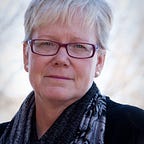Every Living Child Matters Most of All
by Michelle Stirling ©2023
There were 215 pairs of children’s shoes set on the steps of the Vancouver Art Gallery at the announcement by the Kamloops First Nation that 215 unmarked graves had been found, alleging that these are children’s graves of those who went missing at the Kamloops Indian Residential School.
The difference is that the shoes in Vancouver were an artistic expression. These were not the shoes of the real children who attended Kamloops Indian Residential School.
Meanwhile on the streets of Vancouver, hundreds of children are dying every year from drug overdoses. Of course, most of these are not little children, they are young adults, and some are older adults — but every one of them is someone’s child. Every living child matters.
First Nations are many in Canada (~632) but the communities are small in population. These bands range from about 12,000+ people for the Six Nations of the Grand River to small populations of 500 or less.
Surely every living child matters even more when there are so few treasured people to begin with.
Drugs and alcohol are problems for virtually every sector of society in Canada. The B.C. Coroner’s Service report states that: In 2022, there were 2,272 suspected illicit drug toxicity deaths. This is the second largest number of suspected deaths ever recorded in a calendar year, behind 2021 (2,306).
The pandemic caused a surge in deaths by street drugs.
According to an infographic issued by First Nations Health Authority, “First Nations people are disproportionately represented in overdose deaths: 16% of all overdose deaths between January and May 2020 are First Nations people. This number was 9.9 per cent in 2019. First Nations represent only 3.3 per cent of the province’s population.”
This is just in one province — British Columbia. If we take 16% of the 2022 figure of 2,272 illicit drug toxicity deaths reported by the BC Coroner’s Service, that’s 363 First Nations people — someone’s children — who died. In one year. In BC alone.
There are no shoes at the Vancouver Art Gallery for them.
Hundreds of Indigenous people, each one a child of someone, are dying — often on the streets — while at various churches, cemeteries and public grounds, Indigenous people burn sacred fires and drum for the long-dead. The dead whose passings are well documented in government and Department of Indian Affairs archives. The 423 children who died at Indian Residential Schools are well-documented, most of them dying of the rampant Tuberculosis plague of the time; a plague that took the life of one Canadian every hour of the day, and two Canadians every hour of the night in 1908. A plague that only subsided in the 1950s as vaccines and anti-biotics were successfully developed.
Source: Truth and Reconciliation Commission report.
Based on documents, this author believes the unnamed register to be duplicate names of people already accounted for, but due to name change, spelling, anglicization, the people’s documents may appear to be of a separate individual. There are some earlier records that were reportedly unavailable.
Many of the children who died were deeply loved by those who cared for them as revealed by the diaries and chronicles kept by nuns and priests.
Great meeting of the Indians[1] where several chiefs spoke about their children to be put in the residential school. Great banquet for the Indians in the children’s refectory; nearly 200 people had dinner. With the help of the Sisters of the Hospital we had prepared abundant food for the occasion. All were satisfied. (Cardston, Feb. 9, 1898)[2]
As the weather is quite cold, and it is very inviting to skate and slide, Sister Superior does not wait for the visit of Santa Claus to provide the students with winter amusements. After lunch, the boys are presented with skates and the girls with sleds. (Cardston, Dec. 8, 1919)[3]
Visit from Dr. McColgan. He advises the Indians who have sick people here to let them finish the year because they will have better care. (Hobbema, May 5, 1919)[45]
Our dear little Cecile Taylor who had been ill for some time had returned home in the hope of recovering, but the good Lord decided otherwise. It was around 10 o’clock that she gave her beautiful, pure little soul back to God. Her service took place on the 12th. The children went in procession to get the body from her father’s house. (Onion Lake, Jun. 10, 1917)[48]
Imagine. 423 children out of 150,000 Indian Residential School attendees died while at school over the course of 113 years…versus 363 First Nations children who died in one year of illicit drug poisoning in the province of British Columbia alone.
When will there be shoes and teddy bears for them?
Each of these deaths will create more ambiguous losses and layer grief upon grief for the Indigenous community.
Please. Ask yourself.
Is the obsession with the past losses of decades ago, is the focus on lonely forgotten graveyards given more attention than devoting love and guidance to young people trying to find their way in life — is that also killing the spirit of the young people of the present?
If every child matters, don’t the living children matter most of all? And if the living children don’t matter so much, then why do the dead?
-30 -
(884 words)
Michelle Stirling is a member of the Canadian Association of Journalists. She researched, wrote, and co-produced historical shows about Southern Alberta under the supervision of Dr. Hugh Dempsey, then curator of the Glenbow Museum.
